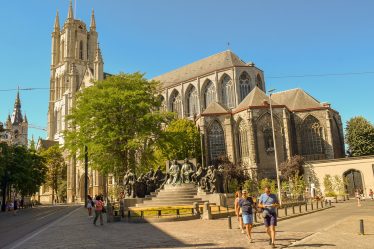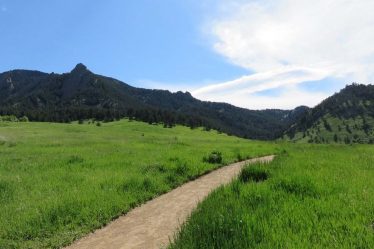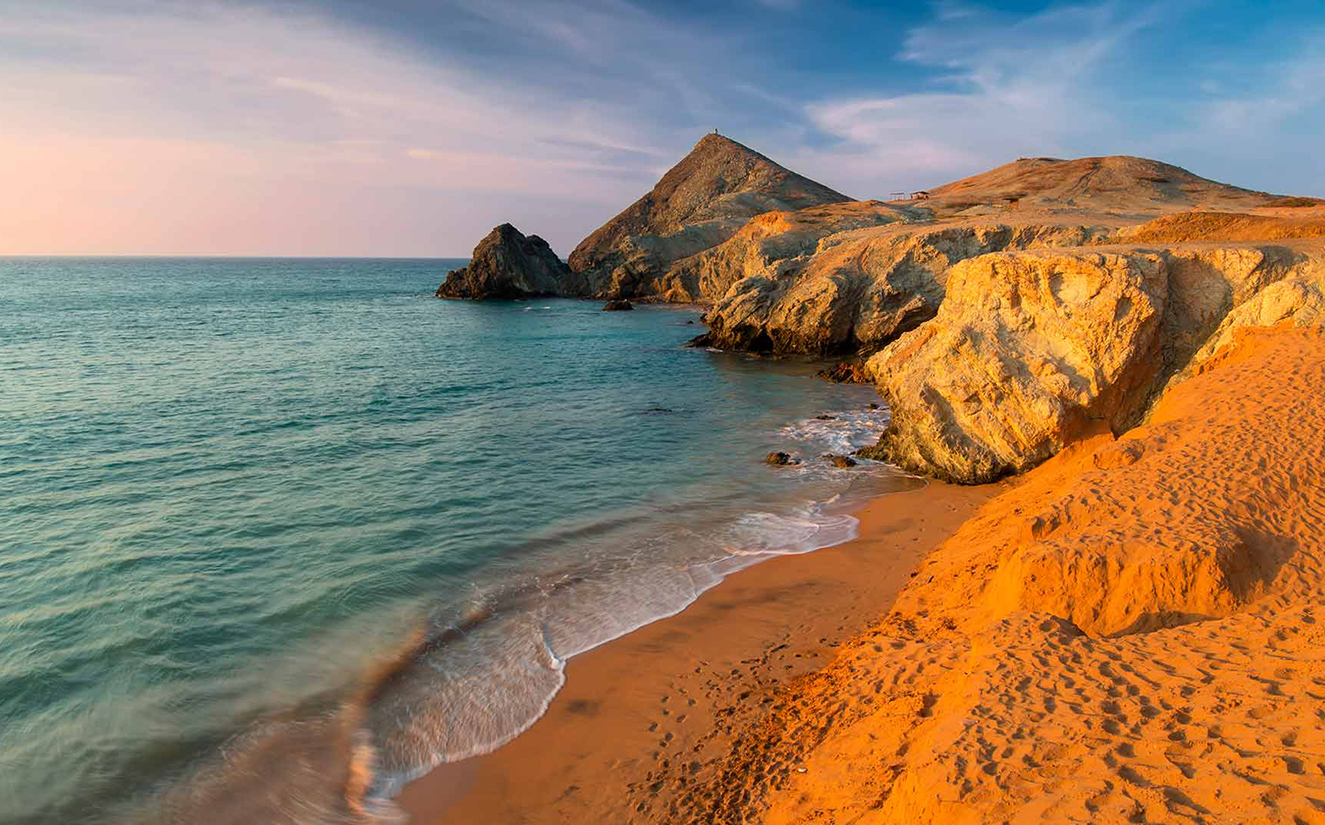
The Guajira Desert (Desierto de La Guajira), located in northern Colombia, is a vast and intriguing expanse known for its breathtaking landscapes, unique cultural experiences, and challenging environment. Spanning across the La Guajira department, this desert is more than just a dry and dusty expanse—it’s a vibrant region filled with stunning scenery and rich cultural heritage. I’ll provide a detailed guide to experiencing the Guajira Desert, including what to do, how much it costs, what to bring, and how to explore it independently.
What Does a Guajira Desert Trip Involve?
One of the crown jewels of the Guajira Desert is the seaside village of Cabo de la Vela. This enchanting location offers a dramatic contrast to the arid expanses of the surrounding desert landscape. Here’s a more detailed look at what makes Cabo de la Vela a must-visit destination:
1. Stunning Beaches
The beaches of Cabo de la Vela are renowned for their pristine beauty. The turquoise waters shimmer under the sun, creating a mesmerizing contrast with the golden sands. The shoreline stretches out, seemingly endless, providing ample space for relaxation and beach activities. The calm, clear waters are perfect for a refreshing dip, while the expansive beaches invite you to simply lay back and enjoy the tranquility.
2. Fresh Seafood and Local Cuisine
Dining in Cabo de la Vela is a treat for the senses. Local eateries, often family-run, serve freshly caught seafood that is both delicious and authentic. From grilled fish to ceviche, the flavors are rich and vibrant, reflecting the bounty of the Caribbean Sea. Enjoying a meal while overlooking the beach enhances the experience, combining the culinary delights with the stunning natural scenery.
3. Kitesurfing Adventures
Cabo de la Vela is a renowned destination for kitesurfing, thanks to its consistent and strong winds. The winds create ideal conditions for both beginners and experienced kitesurfers. Whether you’re looking to take your first lesson or want to perfect your skills, the local schools and rental shops provide all the equipment and instruction needed. The exhilaration of gliding over the waves with the desert in the background is an unforgettable experience.
4. Vibrant Caribbean Atmosphere
The village itself exudes a lively and welcoming Caribbean atmosphere. The local Wayuu community contributes to this vibrant ambiance with their traditional clothing, music, and festivals. Walking through the village, you’ll encounter colorful crafts and textiles, reflecting the artistic spirit of the Wayuu people. Engaging with the locals provides an opportunity to learn about their way of life and traditions, enhancing your overall experience in Cabo de la Vela.
Cultural Immersion in Punta Gallinas
Punta Gallinas, situated at the northernmost tip of South America, is a destination that offers not only breathtaking natural beauty but also a deep dive into Wayuu culture. Here’s a closer look at what to expect:
1. Traditional Wayuu Crafts
The Wayuu people are known for their intricate and vibrant crafts. In Punta Gallinas, you can visit local markets where artisans display their handmade goods, including woven bags, hammocks, and jewelry. These items are crafted using traditional techniques passed down through generations and offer a colorful representation of Wayuu culture.
2. Wayuu Music and Dance
Music and dance are integral parts of Wayuu culture. Attending local ceremonies or festivals provides an opportunity to witness traditional music performances and dances. The rhythms are captivating, and the dances often tell stories of Wayuu history and mythology. Participating in or observing these performances offers a deeper appreciation of the cultural heritage of the region.
3. Wayuu Cuisine
The local cuisine in Punta Gallinas features traditional Wayuu dishes that are both unique and flavorful. Meals often include ingredients such as goat, fish, and local vegetables, prepared with distinctive spices and cooking methods. Sharing a meal with the Wayuu people is not only a culinary delight but also a cultural experience that provides insight into their daily life and traditions.
4. Sustainable Living and Local Practices
The Wayuu people have adapted to the harsh desert environment through sustainable living practices. Learning about their methods of water conservation, food sourcing, and traditional medicine offers a fascinating perspective on how they thrive in such an extreme environment. This knowledge helps visitors understand the resourcefulness and resilience of the Wayuu community.
Witnessing the Majestic Scenery of the Guajira Desert
The Guajira Desert is famous for its dramatic and varied landscapes. Here’s a detailed look at what makes exploring this desert so captivating:
1. Dramatic Landscapes
The desert is characterized by its ever-changing scenery, from rolling sand dunes to barren plains and dry lake beds. Each landscape offers a unique visual experience, with the colors and textures shifting throughout the day. The contrast between the arid desert and the vibrant skies adds to the dramatic effect.
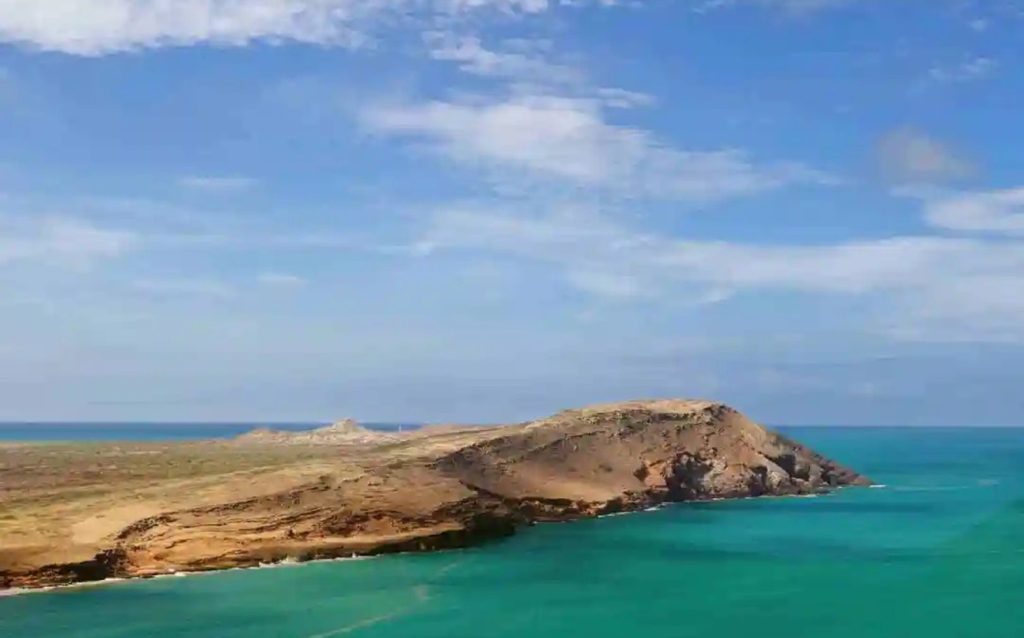
2. Sunrises and Sunsets
The desert’s vast expanse makes it an ideal location for witnessing spectacular sunrises and sunsets. As the sun rises, the desert is bathed in soft, golden light, casting long shadows and illuminating the sands. Similarly, sunsets paint the sky with hues of orange, pink, and purple, creating a serene and almost otherworldly atmosphere.
3. Flora and Fauna
Despite the harsh conditions, the Guajira Desert is home to a variety of resilient flora and fauna. Look out for hardy plant species that have adapted to the dry environment, as well as animals such as lizards, birds, and the occasional fox. Observing these life forms in their natural habitat provides insight into the desert’s ecological balance.
4. Peace and Solitude
The vastness of the desert provides a profound sense of peace and solitude. The lack of human interference allows for moments of introspection and connection with nature. Whether you’re exploring on foot or simply sitting and absorbing the surroundings, the desert’s expansive silence offers a rare opportunity for reflection and relaxation.
Participating in Local Cultural Events
Engaging in local cultural events is a key aspect of visiting the Guajira Desert. Here’s a detailed guide to experiencing these events:
1. Traditional Wayuu Ceremonies
Local ceremonies are an integral part of Wayuu culture and provide a window into their traditions. These ceremonies may include rituals, dances, and music that reflect the Wayuu people’s beliefs and customs. Attending such events allows visitors to witness and participate in these cultural practices, offering a deeper understanding of the Wayuu way of life.
2. Music Performances
Music plays a significant role in Wayuu culture. Local performances often feature traditional instruments and rhythms that are unique to the region. Participating in or watching these performances provides insight into the emotional and cultural significance of music in Wayuu society.
3. Culinary Experiences
Local festivals and events often feature traditional Wayuu cuisine. These gatherings offer the chance to taste authentic dishes prepared using traditional methods. Engaging in these culinary experiences allows visitors to appreciate the flavors and ingredients that are central to Wayuu cooking.
4. Supporting Local Crafts
Cultural events often include markets or exhibitions where Wayuu crafts are sold. Purchasing these crafts supports local artisans and helps preserve traditional techniques. Additionally, owning a piece of Wayuu craftsmanship provides a tangible connection to your experience in the Guajira Desert.
How Much Does a Trip to the Guajira Desert Cost?
The cost of visiting the Guajira Desert can vary depending on your travel style and choices. Here’s a breakdown of typical expenses:
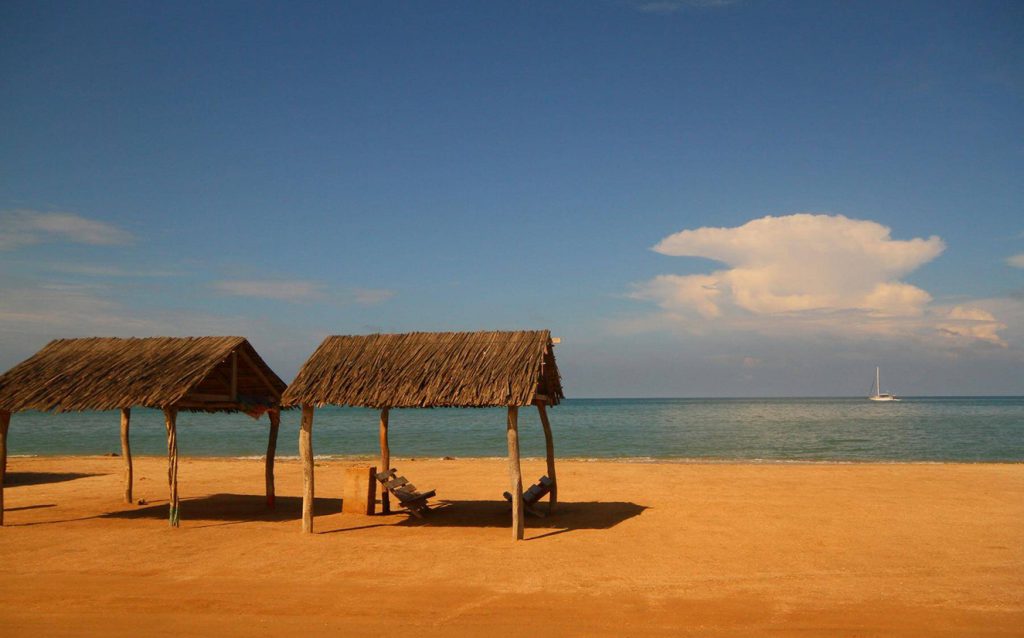
- Transportation Costs To reach the Guajira Desert, you can fly from major Colombian cities like Bogotá or Cartagena to regional airports such as Ríohacha or Tuluá. Flights usually range from $200 to $400 round-trip. From the airport, you’ll need a 4×4 vehicle to reach the desert, with ground transportation costs ranging from $50 to $150 depending on the distance and type of vehicle.
- Accommodation Costs Accommodation options in the Guajira Desert range from basic lodges to more comfortable eco-resorts. Prices typically range from $50 to $200 per night, depending on the type of lodging and the amenities provided. Choosing accommodation that fits your budget and preferences will ensure a comfortable stay while allowing you to fully enjoy the desert’s unique allure.
- Activity Costs Participating in local activities and tours often involves additional costs. For example, desert excursions, kitesurfing, and cultural experiences typically cost between $50 and $100 per activity. If you choose to join a day tour or multi-day expedition with a travel company, the cost may be higher but often includes transportation, guides, and meals.
- Food Costs Dining in the Guajira Desert is relatively affordable. Local eateries and food stalls offer traditional dishes at reasonable prices, with a simple meal costing around $10 to $20. If you choose to dine at your hotel, prices may be slightly higher but typically include authentic and flavorful regional cuisine.
What to Bring on a Guajira Desert Trip
- Sunscreen and Sun Protection The sun in the Guajira Desert is intense, so it’s crucial to bring sunscreen, a wide-brimmed hat, and sunglasses to protect your skin from UV rays.
- Comfortable Clothing Lightweight and breathable clothing is essential for the desert climate. Long sleeves and long pants are recommended to protect against sunburn and insect bites. Additionally, pack a light jacket for cooler temperatures in the evenings.
- Plenty of Water and Snacks The dry desert environment can lead to rapid dehydration, so carrying ample drinking water is essential. Bring along lightweight snacks such as nuts, dried fruits, and energy bars for sustenance during your explorations.
- Comfortable Footwear The desert terrain can be rugged and uneven, so sturdy and comfortable hiking shoes are important. Look for footwear that is both waterproof and slip-resistant to handle the various conditions you may encounter.
- Camera and Photography Gear The Guajira Desert offers stunning photographic opportunities, so don’t forget your camera or smartphone to capture the striking landscapes and unique cultural moments.
How to Explore the Guajira Desert Independently
- Renting a 4×4 Vehicle For those who prefer to explore the Guajira Desert independently, renting a 4×4 vehicle is a great option. This allows you to travel at your own pace and customize your itinerary according to your interests. Rental companies typically offer a range of vehicles, from basic to luxury 4x4s.
- Planning Your Itinerary Before setting out, make sure to research the desert’s main attractions and routes. Use travel guides or consult local information centers to plan a well-rounded itinerary that includes key sights and experiences.
- Obtaining Local Maps and Guides Having a detailed map and guide of the area is crucial for navigating the desert. These resources will help you stay oriented and ensure you don’t get lost in the vast terrain.
- Engaging with Locals Interacting with local residents can provide valuable insights into the desert’s geography, culture, and safety. They can offer firsthand information about the best places to visit and practical tips for navigating the area.
- Prioritizing Safety The desert environment can be harsh, so it’s important to be prepared for changes in weather and physical exertion. Make sure to have emergency supplies, know the location of nearby medical facilities, and understand how to contact local emergency services if needed.
With these tips, you’ll be well-prepared to experience the Guajira Desert’s incredible beauty and cultural richness. This vast desert offers not just breathtaking natural landscapes but also a deep cultural connection and unforgettable adventures. Whether you seek excitement, cultural immersion, or simply the serene beauty of the desert, the Guajira Desert promises an enriching and memorable journey.
